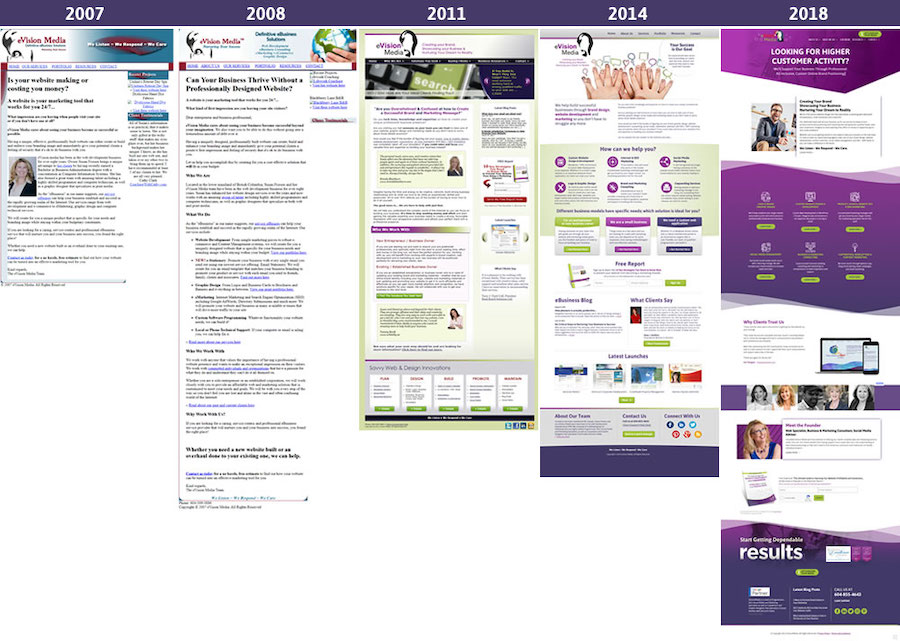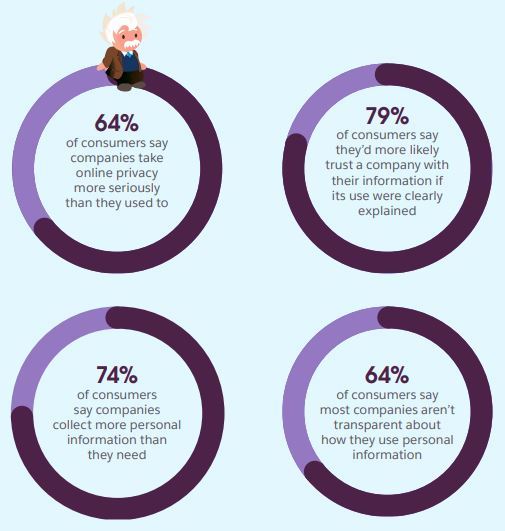If you want to foster any kind of fruitful relationship, you’ve got to have trust.
This simple fact remains true in all relationships, whether they’re romantic, work-related, family-oriented, or the relationships we build with the members of our community, like local business owners.
Going a step further, this also applies to the relationships we have with each and every brand with which we do business.
But unfortunately, over the last several years, the level of trust – within all our relationships – seems to be eroding.
According to a survey from the World Values Survey Association, over the last 15 years, the number of people who believe that “most people can be trusted” has fallen by about 20 per cent.
The survey, which took place between 2017 and 2022, surveyed nearly 100,000 people in more than 60 countries, asking them about their values, including several questions about their trust in various groups and institutions.
As you can see from the data below, even Canadians have chosen to reject the idea that “most people can be trusted”, with the majority of Canadian respondents saying, “you need to be very careful in dealing with people”.

Now, I know this question deals with whether or not people can be trusted, but I would argue that this lack of trust also applies to businesses and their respective brands, which would probably be judged much more harshly than people anyway.
In any case, the fact of the matter is people are considerably less trusting than they were 15 years ago, and this is part of the reason why trust is becoming more important than ever for brands, especially today, in what’s now being referred to as the “trust economy”.
But what is the trust economy, why is it so important to your brand, and what can you do to ensure your brand can thrive in this new economic climate?
Well, if you’re asking yourself these kinds of questions, wondering how to build brand trust, or you just want to learn more about the importance of brand trust, then this article is definitely for you.
It explores what the trust economy is, why understanding it is essential to the success of your brand, and explains some strategies to help your brand thrive in today’s trust economy.
What Is the Trust Economy?
In a nutshell, the term trust economy refers to the idea that trust forms the foundation of the economy.
At the same time, this term is also used to explain that in commerce, trust is essentially a form of currency (and a highly valuable one at that).
You see, when people have less trust in the economy in general, and the brands that populate it, products and services tend to have less value, as fewer people are willing to do business with the companies that sell this stuff.
A lack of trust also makes it harder for brands to be competitive, as it’s tougher for them to significantly lower prices or earn enough trust with consumers to actually gain an edge over the competition.
In addition, this lack of trust, and the lower profits that go along with it, tend to impede progress, as companies have less money to grow and invest in innovation.
This may sound like something straight out of an economics textbook, but it’s definitely more than a theory, and its real-world impact is shown in the opinions of many consumers today.
A survey from Salesforce of more than 13,000 consumers which explored, among other things, the “evolution of trust and loyalty in customer-brand relationships” illustrates this effect perfectly.
For example, 74 per cent of respondents in the survey said, “communicating honestly and transparently is more important now than before the pandemic” and 88 per cent said they “believe trust becomes more important in times of change.”
And if the last few years aren’t considered “times of change”, then I don’t know what would be.
That being said, it’s obvious that trust is becoming more and more important for brands, and most consumers today are aware of how important trust is when deciding what brands to do business with.
With that in mind, it’s now more vital than ever to ensure your brand is doing everything it can to acquire the trust it needs to compete in today’s increasingly trust-focused economy.
So, if you’re still wondering how to build brand trust, then you’re going to want to keep reading, because below, I’ve outlined several examples of how I and my team have been able to build trust in eVision Media’s brand, so you can understand how to apply these principles to your brand.
Read: Why Building Trust is So Important for a Successful Rebrand

Whether you’re trying to build a new brand, or reinvigorate an existing one, trust is absolutely vital.
Because if you’re not seen as trustworthy, people will be less likely to want to do business with you. And even if you’ve already built up some trust, if you rebrand in a way that confuses or alienates your customers, you could end up losing many of them in the process.
So, if you’re thinking about rebranding, and you want to learn why building and maintaining trust is essential for any rebrand, then you should definitely read this article.
It explores how we successfully rebranded one of our long-term clients, and why trust played an integral role in that process.
Authenticity
When it comes to branding, authenticity is one of the best ways to gain trust.
The fact is people are more likely to resonate with brands that are genuine and relatable. That being said, it’s pretty hard to be known for those qualities if everything you do seems too perfect.
So, if you want consumers to relate to your brand, and see it as more sincere, then you can’t be afraid to put yourself out there and be a bit vulnerable.
For example, here at eVision Media, we’re celebrating our 20th anniversary, and one of the ways we did that is by publishing a retrospective article on how eVision Media was formed, and how we’ve evolved over the years.
Now, we could have left out all of the awkward, cringey details of how this company came to be, but that would seem way too contrived, make us look like a bunch of phonies, and make it harder for consumers to relate to our brand.
So, instead of censoring the embarrassing stuff, we left all the gory little details in there, like the photo below, which was taken at our employee Christmas party about ten years ago, when I was the heaviest I’ve ever been.

As you can see from the image below, we also included photos of the various iterations of our website over the years (some of which were not very good), and even admitted that we didn’t have a website until several years after eVision Media was founded, which is never a good look for a company that builds websites.

But at the end of the day, hiding this stuff, and trying to sanitize everything to make it look perfect, would work against our interests. So, as embarrassing as some of this stuff is, it’s better for us to air this dirty laundry than sweep it under the rug.
Because if your branding seems too perfect, then not only is it harder for people to relate to, but it also makes people suspicious.
The idea is if you’re willing to hide small details like this, then you’re probably hiding many other things, and that sort of perception can deal a crushing blow to consumers’ trust in your brand.
Transparency
If you want to gain the trust of consumers, you’ve got to be as transparent as you possibly can.
There are a lot of different ways to do this, but it all basically boils down to being honest and telling consumers everything they need to know in order to make an informed decision about whatever it is you’re offering.
In our industry, one of the best ways to be transparent is to be blatantly honest about how you collect and use people’s data.
Whether it’s people signing up for your newsletter, giving you their information in exchange for a free giveaway, or all the pixels and cookies your website uses to track visitors and enhance their experience, you’ve got to tell people exactly what you’re doing with their data.
So, if someone signs up for your newsletter, you shouldn’t be doing anything else with their information other than using it to send them your newsletter. And if you want to use their data in any other way, you’ve got to make sure to get their permission first.
Especially over the last few years, when many of us have been spending a lot more time online, this issue has become increasingly relevant for consumers.
For example, the Salesforce survey I referenced above asked several questions about consumer data privacy, and as you can see from the image below, the responses it got are very telling.

While 64 per cent of respondents said, “companies take online privacy more seriously than they used to”, just as many of them said that “most companies aren’t transparent about how they use personal information”.
So, based on the results of this survey, this is obviously an important issue for many consumers today, and it backs up the fact that you can never be too transparent when it comes to data collection.
More importantly, the survey found that 79 per cent of respondents will “more likely trust a company with their information if its use were clearly explained”, and nearly eight in 10 said that when it comes to data collection, additional transparency increases their trust.
At the end of the day, consumers want to know what you’re doing with their data, and they don’t want to have to search to find that information, so make sure to give them what they want, and make sure it’s easy to find, and easy to understand.
Outreach
When brands try to build trust, something that tends to be overlooked is outreach.
Many business owners probably think this is an unnecessary waste of time, but in reality, that couldn’t be further from the truth.
Even if you run a business that operates exclusively online, like I do, it never hurts to attend events, get to know the locals, and show how much you care about your community.
Now, for some people, especially those who are more on the shy side, this may pose a problem, as no marketing company is going to be able to do this for you.
But if you can overcome those anxieties, and put yourself out there anyway, I can assure you, it will be well worth your time.
There are tons of different ways to do this, like running for city council, joining your local rotary club or chamber of commerce, volunteering, public speaking, or attending and/or sponsoring networking events.
I love doing this kind of outreach, as it’s one of the best ways to build trust with consumers in your community while gaining familiarity and recognition in your local area.
The image below of me presenting to the panel of judges at the Small Business BC Awards is a great example of this.

But if you can’t get over those fears, or you just want to go one step further, you can also do effective outreach online by interacting with members of social media groups, or doing some sort of live show or podcast where you can interact with your audience.
Our Overcoming Roadblocks series offers a perfect example of this kind of online outreach.
The idea behind this series was to interview fellow female business owners who can offer advice on how struggling entrepreneurs can overcome the “roadblocks” that are preventing their success in business, like the dreaded imposter syndrome.
This six-episode series offered many opportunities to interact with our audience on Facebook and YouTube and culminated with a live masterclass where viewers could hop into the chat, ask questions, and get answers in real-time.
My guests and I were thrilled to be able to interact with the audience and offer advice to some struggling business owners along the way, and this all helps to build trust in eVision Media’s brand.
So, if you want to ensure your brand can thrive in today’s trust economy, then one of the best things you can do is get out there and do some outreach, whether it’s online, in person, or both.
Are you still asking yourself how to build brand trust? We’ve been helping business owners to build their brands for more than 20 years. Contact us today to find out more about what we can do for you.
To your business success,
Susan Friesen
P.S. If you liked the article, you might want to subscribe to our newsletter. We publish tons of valuable content to help you learn more about marketing, and subscribing is the best way to ensure you don’t miss out. Additionally, if you’d like to learn more about building a search engine optimized website, click here for our free website guide.







